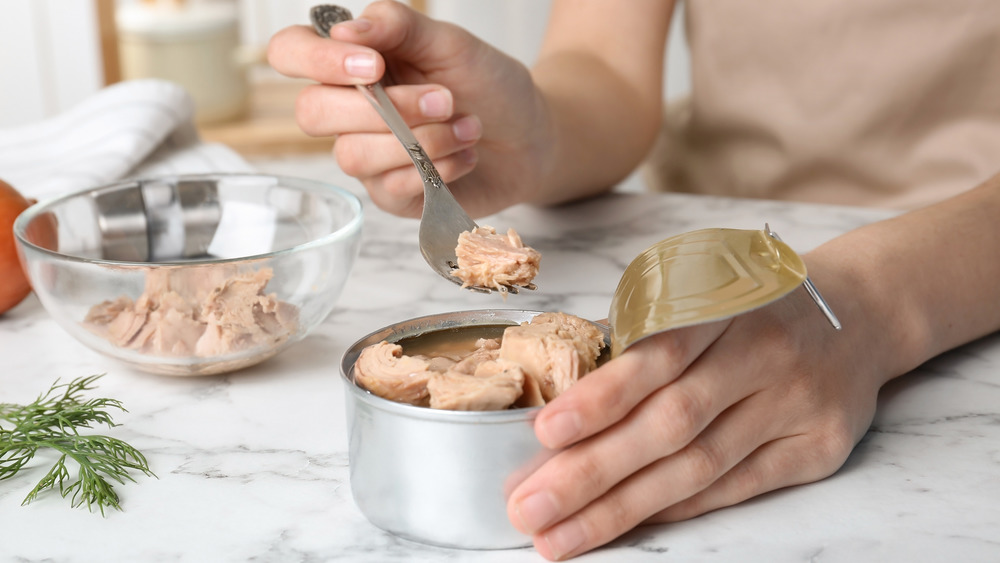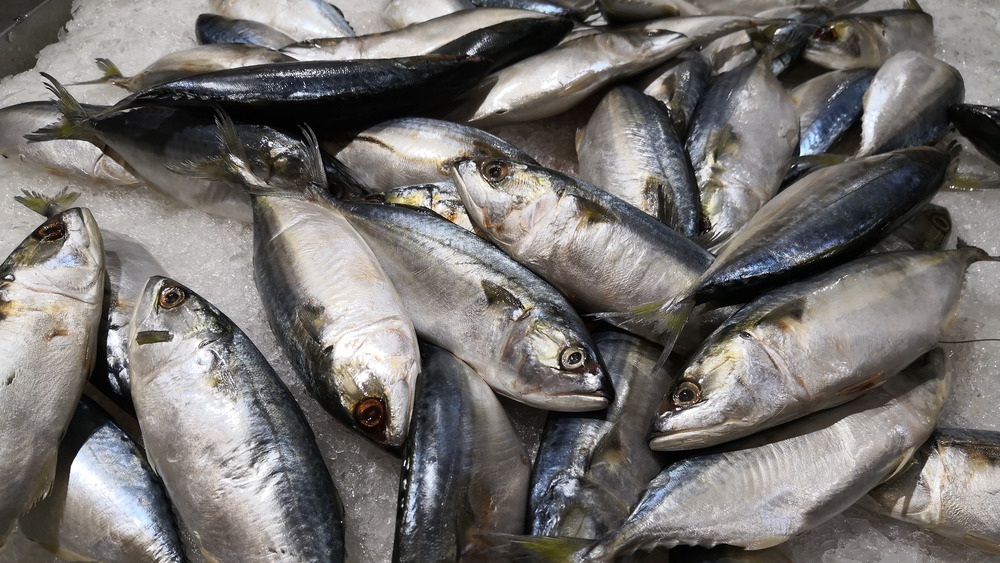Why You Should Rethink Eating Canned Tuna
Canned tuna has been a pantry staple for decades. Tuna fish sandwiches have featured in many a brown bag lunch, and the dressed up version, the cheese-smothered tuna melt, occupies a well-deserved spot in the Sandwich Hall of Fame (which is not an actual place, but oh, how we wish it were). While canned tuna can be budget-friendly and has long starred in many budget-friendly cuisine classics (tuna noodle casserole, anyone?) it can also be found in the kitchens of celebs including Chrissy Teigen and Kamala Harris. Hey, if it's good enough for our soon-to-be VP, it's got to be good enough for the rest of us, right?
Emily Wunder, a registered dietitian who shares her favorite recipes via her website Healthier Taste, tells us that while "canned tuna can be a source of lean protein," she cautions that "like many foods, [it] should be consumed in moderation." One particular ingredient she says may raise concerns is pyrophosphate, a chemical that contains phosphorus. "Phosphorus," she says, "is needed in the body to balance out and work with calcium to maintain bone health," but warns that "when phosphorus levels become too high, the body requires more calcium to balance it out, so it pulls this from the bones." This could eventually lead to bone health issues. She also notes that a report published in the journal Environmental Toxicology and Pharmacology says pyrophosphate could possibly cause some damage to the immune system, but only if extremely high amounts are consumed.
Tuna may also contain mercury
Tuna, particularly of the pricy bluefin kind, can be pretty high in mercury, which is an ingredient we've long been cautioned to avoid ingesting in excess. Brown explains that while many types of fish contain mercury, tuna is particularly mercury-prone due to its size. "Tuna," she says, "is a large fish, so it is consuming smaller fish, causing it to have higher mercury levels." This means that caution is required when it comes to consuming it, particularly for at-risk groups including pregnant women and young children. As regards the latter group, WebMD says that kids who weigh under 55 pounds should eat tuna no more than one time per month, and bigger kids only twice a month, so maybe hold off on those tuna salad sack lunches.
Brown says that the Natural Resources Defense Council considers canned chunk light tuna to have a moderate mercury level, as does skipjack, so both types can be consumed by healthy, non-pregnant adults up to six times per month. Albacore and yellowfin have higher mercury levels, so three times a month is the maximum number of times you should be eating those. Bigeye and ahi tuna have the most mercury of all, so consume at your own risk, although Brown says you should probably avoid them altogether.

